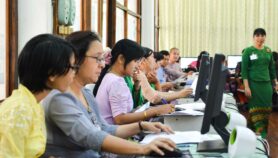By: Catarina Chagas
Send to a friend
The details you provide on this page will not be used to send unsolicited email, and will not be sold to a 3rd party. See privacy policy.
[RIO DE JANEIRO] Research on neglected tropical diseases (NTD) has increased over the past two decades, with the steepest growth in Brazil and India, according to a new report.
Every year, NTDs affect more than one billion people and kill more than half a million people across the world. Despite these figures, historically there has been little focus on NTD-related research, public health services, or drug and vaccine development.
But according to the ‘Thomson Reuters Global Research Report Neglected Tropical Diseases’, released last month (June), this trend is beginning to change.
The report measured NTD coverage in scientific publications across the world between 1992 and 2011, using data from Web of Science, an online database that covers 11,500 journals worldwide.
During the time period analysed, more than 73,000 papers on NTDs were published. Most of these focused on a single disease, and articles covered diverse aspects of NTDs, ranging from the biology of disease vectors to healthcare solutions.
The number of papers doubled from around 2,500 in 1992 to more than 5,000 in 2011, the report states.
Most papers included at least one author from developed countries, but the presence of authors from Brazil and India is particularly noteworthy. In 2011, more papers on NTD had an author or co-author from Brazil than from the United Kingdom, and India’s participation is higher than Germany’s, for example.
"These countries are very rapidly expanding research output and diversifying portfolios", Jonathan Adams, director of research and development at Thomson Reuters, told SciDev.Net. "Their targeted commitment to national and regional priorities will make a huge difference to the balance of effort on diseases affecting their populations."
Eric Stobbaerts, Latin America director of the Drugs for Neglected Diseases initiative (DNDi), said: "Public academic actors such as Fiocruz in Brazil, the Indian Council of Medical Research (ICMR), and the Council of Scientific and Industrial Research (CSIR) in India, for example, have taken the lead in bringing excellence to research and development (R&D) for medicines and vaccines in their respective regions".
Other developing countries with increasing participation in NTD research are Argentina, China, Iran, Thailand, and Turkey.
Of the NTDs evaluated, dengue fever is one of the diseases covered most frequently by research papers, particularly between 2002 and 2011. This is followed by soil-transmitted helminthiasis, leishmaniasis, and Chagas disease. Diseases such as schistosomiasis, which affects over 200 million people every year, still receive little attention.
"Some helminth diseases [diseases caused by parasitic worms] appear relatively under-researched compared to protozoan diseases [diseases caused by single-celled organisms], and that may be because of the challenge in developing effective laboratory models", said Adams.
While recognising that there has been a steady increase in resources for NTD research and development, Stobbaerts said "significant scientific breakthroughs are still sorely needed. The urgent health needs of the majority of the global population are still unattended, current R&D efforts are fragmented, and sustainable financing mechanisms are scarce."
Link to full report (free registration required)













